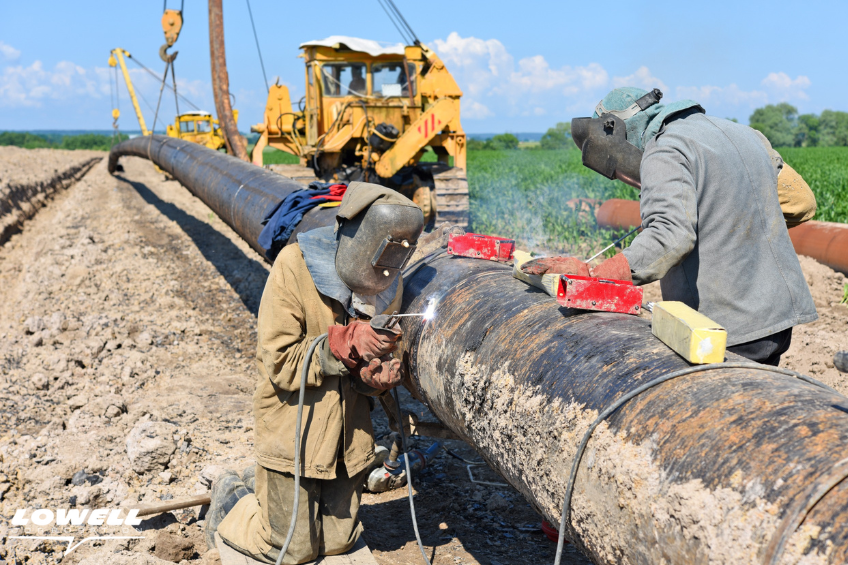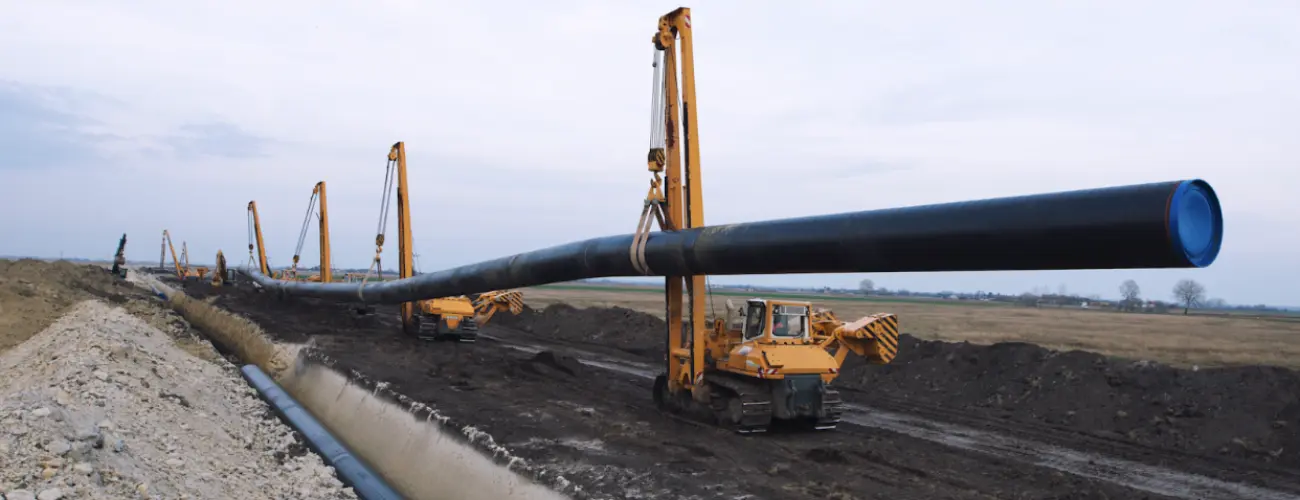The Role of Creek Pipe Midland in Next-Gen Pipeline Monitoring Systems
Crucial Tips and Best Practices for Successful Pipelines Installments
Successful pipe setups pivot on tactical preparation and adherence to ideal practices. Selecting appropriate products and recognizing pipeline sizing are essential steps. Proper cutting and signing up with techniques guarantee leak-free connections. Furthermore, cautious placement and enough assistance add to the system's integrity. Several forget the importance of sealing and insulation. What other significant elements could affect the durability and effectiveness of a pipe system? Checking out these elements exposes a lot more.

Choosing the Right Materials for Your Task
When picking products for a piping setup, it is necessary to examine the certain demands of the project, as various products provide unique advantages and disadvantages. PVC pipelines are lightweight and immune to rust, making them excellent for drain systems. On the other hand, copper pipelines are understood for their sturdiness and effectiveness in warm water applications, though they can be much more expensive.Additionally, galvanized steel pipelines offer toughness and durability, yet they might deal with deterioration problems with time. The atmosphere plays a substantial function in product selection; direct exposure to chemicals or extreme temperature levels can determine the choice.Moreover, job spending plan constraints can not be forgotten; some materials might sustain lower preliminary prices however greater long-term maintenance. Inevitably, understanding the application, ecological problems, and budget factors to consider will certainly direct the decision-making procedure, ensuring the selected product straightens with the project's general objectives and requirements.
Recognizing Pipeline Sizing and Pressure Demands
Picking appropriate materials is just one aspect of a successful piping installment; recognizing pipeline sizing and pressure requirements is similarly crucial. Correct pipe sizing assurances that liquid moves successfully without excessive stress loss, which can lead to system failures. Elements such as fluid temperature level, kind, and circulation price have to be taken into consideration when determining the appropriate pipe diameter.Additionally, pressure requirements are crucial in preserving system stability. Each application has particular pressure ratings that pipes must meet to avoid leaks or ruptureds. Engineers typically refer to requirements and guidelines to compute the essential stress rankings based upon the meant use and environmental conditions.Inadequate overlooking or sizing stress demands can result in pricey repair work and minimized system efficiency. Because of this, comprehensive evaluation and planning are vital to achieve ideal outcomes in pipelines setups, ensuring longevity and integrity in the total system.
Grasping Proper Trimming and Joining Strategies
Grasping proper cutting and signing up with methods is important for reliable pipeline installations. Picking the best cutting devices and comprehending various signing up with methods can substantially affect the integrity and long life of the system. This section will certainly explore these essential aspects to assure successful pipeline work.
Reducing Devices Choice
Picking the best cutting devices is vital for attaining accurate and tidy pipe installments. A variety of reducing devices are offered, consisting of pipe cutters, hacksaws, and reciprocating saws, each fit to various materials and pipe dimensions. Pipe cutters are suitable for producing smooth, burr-free edges, while hacksaws supply adaptability for different pipeline kinds, albeit with a less clean cut. It is critical to assess the product being reduced; for instance, plastic pipes need various blades compared to metal ones. Furthermore, making certain the tools are well-kept and sharp will certainly boost cutting efficiency and accuracy. Eventually, picking appropriate cutting tools not only improves the setup procedure yet additionally adds to the overall integrity of the piping system.
Joining Techniques Introduction
After assuring exact and tidy cuts with the appropriate devices, the next step in pipe installation involves understanding the various joining methods available. Common techniques include solvent welding, which utilizes adhesives to fuse pipes, and mechanical joining, which counts on fittings and clamps for secure links. Soldering and brazing are also preferred for steel pipelines, using warmth to produce solid bonds. Each technique has details applications and product compatibility, making it important to pick the correct one based on the task needs. Appropriate preparation and technique are vital to guarantee leak-free joints. Understanding these signing up with approaches not just enhances the longevity of the installment however likewise contributes to the total performance and security of the plumbing system.
Ensuring Specific Positioning and Support
Attaining exact positioning and assistance throughout pipe installments is necessary for ensuring a reliable and long lasting system. Proper placement lessens stress on joints and lowers the danger of leakages or failures over time. To accomplish this, installers should make use of laser alignment tools or levels to ascertain that pipelines are positioned and straight correctly.Support systems, such as brackets and hangers, should be mounted at regular periods to stop drooping and activity. The spacing of assistances ought to follow industry criteria, taking into consideration the kind and diameter of the pipes. Creek Pipe Pipeline Construction.Additionally, installers ought to take into consideration the thermal expansion and contraction of products, providing adequate room for movement. Routine examinations during the setup procedure can help determine imbalances early, home permitting timely modifications. Abiding by these techniques will improve the durability and integrity of the piping system, ultimately resulting in minimized upkeep prices navigate here and improved performance
Carrying Out Reliable Securing and Insulation
Effective sealing and insulation are vital for keeping the honesty of pipeline installments. Selecting the suitable materials and utilizing appropriate setup methods can substantially reduce the risk of leaks and energy loss. Cautious interest to these aspects warranties excellent efficiency and long life of the piping system.
Picking the Right Products
When it involves pipeline installments, picking the appropriate products for securing and insulation is necessary for making sure long-lasting performance and efficiency. Top quality sealing products, such as silicone or polyurethane sealers, successfully avoid leaks and boost longevity. Insulation products like fiberglass or foam assistance maintain temperature level, lowering energy loss and safeguarding versus condensation. It is crucial to select materials compatible with the details pipes and environmental problems to prevent destruction in time. In addition, thinking about elements such as dampness resistance, temperature tolerance, and chemical compatibility can substantially influence the overall performance of the setup. Ultimately, spending in proper sealing and insulation products can result in reduced maintenance prices and improved system integrity.

Proper Installment Strategies
Appropriate setup techniques play a vital role in taking full advantage of the performance of the chosen securing and insulation products. Verifying clean and dry surfaces before using seals stops wetness ingress and boosts attachment. Making use of suitable adhesives or sealers, used consistently and in adequate quantities, assurances effective securing against leaks. In addition, insulation must be fitted snugly around pipelines, with all seams and joints firmly sealed to minimize warmth loss and condensation. It is important to follow maker guidelines for installment, taking note of specific temperature level and pressure needs. Regular inspections and upkeep can further improve the longevity and performance of the sealing and insulation initiatives, ultimately bring about a more reliable piping system.
Carrying Out Thorough Inspections and Testing
Carrying out thorough assessments and testing is vital in guaranteeing the stability and capability of pipe installments. This procedure begins with aesthetic inspections to determine any kind of visible flaws, such as imbalances or corrosion. Following this, stress screening is crucial to confirm the system's capacity to stand up to functional pressures without leakages. Numerous methods, such as hydrostatic and pneumatically-driven testing, can be utilized relying on the installation type and ecological read review conditions.Additionally, non-destructive screening techniques, including ultrasonic or radiographic testing, might be made use of to assess the condition of the pipes without creating damage. It is important for examiners to record searchings for carefully, as precise documents aid in future analyses and compliance with safety policies. Routine inspections and testing not just boost the longevity of the piping system yet additionally guarantee that any type of possible concerns are addressed proactively, reducing threats connected with pipe failures.
Maintaining Your Pipe System for Durability
Keeping the longevity of a pipe system needs continuous maintenance in addition to initial assessments and screening. Normal monitoring is important, as it assists determine prospective problems before they escalate right into pricey repair services. This consists of checking for leaks, deterioration, and blockages, which can endanger system integrity.Routine cleansing is also advised to avoid accumulation, particularly in older systems. Using suitable cleaning approaches customized to the pipe product can improve toughness and efficiency.Moreover, carrying out temperature control measures can minimize the dangers connected with extreme climate conditions that might trigger expansion or contraction.Documenting upkeep activities help in tracking the system's health and wellness and facilitates prompt interventions.Lastly, engaging specialist services for periodic evaluations guarantees adherence to sector standards and techniques. By prioritizing these upkeep techniques, the life-span of a pipe system can be greatly extended, inevitably resulting in set you back savings and boosted performance.
Often Asked Inquiries
What Tools Are Necessary for Pipeline Installation Projects?
For pipe setup tasks, essential tools include pipe cutters, wrenches, gauging tape, degrees, and sealers. These tools enable precision, assurance correct installations, and keep integrity throughout the installation process, adding to general job success.

How Do I Establish the Finest Installation Place?
Determining the ideal installation area involves reviewing elements such as access, distance to existing framework, soil problems, and local guidelines. Careful analysis warranties perfect capability and longevity of the pipeline systems being mounted.
Are There Any Type Of Safety And Security Safety Measures to Take Into Consideration During Setup?
Throughout pipeline installation, one need to take into consideration safety precautions such as putting on safety gear, making sure correct air flow, checking for potential risks, and securing the workplace to stop accidents, thus securing both the installer and the surrounding setting.
Can I Mount Pipelines in Extreme Weather Conditions?
Setting up pipes in extreme weather presents significant challenges. The cold can create products to come to be brittle, while heat may result in growth problems. Appropriate safety measures and products are important to assure resilience and functionality under these situations.
What Common Mistakes Should I Avoid During Installation?
During installment, one need to stay clear of usual blunders such as incorrect positioning, insufficient sealing, neglecting support frameworks, and making use of inappropriate materials. Each of these errors can cause leaks, structural failures, and pricey fixings in the future. Alternatively, copper pipes are known for their resilience and effectiveness in warm water applications, though they can be a lot more expensive.Additionally, galvanized steel pipes provide toughness and long life, yet they may encounter deterioration issues over time. A selection of cutting devices are available, including pipeline cutters, hacksaws, and reciprocating saws, each fit to different materials and pipeline sizes - Creek Pipe Company. Pipeline cutters are suitable for creating smooth, burr-free sides, while hacksaws use flexibility for various pipeline types, albeit with a much less clean cut. Attaining accurate alignment and assistance during pipeline installations is crucial for ensuring a efficient and durable system. For pipeline installation jobs, essential devices include pipe cutters, wrenches, gauging tape, levels, and sealers